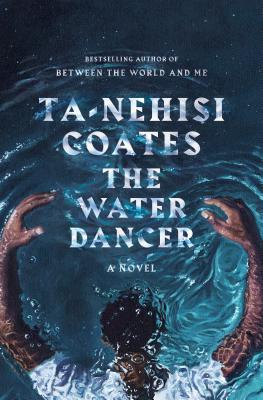Book Review: The Water Dancer
by Ta-Nehisi Coates
2-time National Bestseller, Adult Fiction (Hardcover)
List Price: $28.00(Sep 24, 2019)
Fiction, Hardcover, 432 pages
More Info ▶
Read an Excerpt from The Water Dancer
Book Reviewed by Tony Lindsay
To mix magical realism with historical fiction is a bold task. To discuss the topic of family pride from the perspective of the offspring of a slave and a master is an awkward task. To create a vernacular specific for a novel is a speculative task. To accomplish either of these tasks would require a seasoned fiction writer; however, Ta-Nehisi Coates’ premier novel, The Water Dancer, achieves these tasks.
The genre of magical realism attempts to make the supernatural natural; it causes an acceptance of the extraordinary as ordinary. Historical fiction builds on and depends on actual past events to create a story. Coates’ protagonist Hiram Walker, a slave, is assumed to have the power of a water dancer; one who can cross distances of actual land through mental prowess. If developed, this supernatural power would be a great tool for one seeking to escape bondage. In the novel Harriet Tubman also possesses this power. Coates skillfully crafts the function and dedication of actual underground railroad operators and conductors into the novel. The danger of being associated with the underground railroad is present and consistent throughout the novel. The historical events that the novel is built around are lived through by the reader: family loss, slave catchers, the desire for freedom, and the never-ending fear of being chattel that is sold or killed at the slave owners will is a constant.
Perhaps the most controversial aspect of the work is Hiram Walker’s tragic mulatto status. The reader witnesses Hiram’s pride in being part of a Virginia family lineage while at the same recognizing that his paternal family has ripped ruin on his maternal family, and that the prevalent attitude of ownership and sexual dominance had continued across the generations. Hiram’s forced acceptance is heart wrenching to witness, and the birth of girl child into such an environment adds to Hiram’s desire for freedom and his water dancer’s development.
The vernacular Ta-Nehisi Coates created for the novel adds definition to the peculiar institution that was American slavery. Coates’ usage of the term task explains that a slave’s whole life was tasked — from birth to death, their steps were ordered by another. He labeled active plantations, where slaves were tasked, as coffins. The rich plantation owners were tagged Quality. The sex trade was named fancy, and when slaves were sent further south, he coined that going Natchez way. When a slave was moved from bondage to freedom he or she was conducted by the Underground. Coates’ terms add an understanding to a historically distorted period in American history.
The Water Dancer is a fictionalized slave narrative about slaves with the power to free other slaves and about abolitionist who were appalled by slavery and become zealots against the institution. The lives that Coates created in the novel told a story of slave history and folklore.

